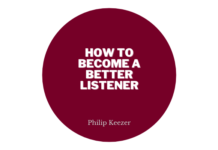Branding your online store to be distinct and trustworthy is one of the best things you can do to boost your business.
But it’s also one of the hardest.
If branding was easy to do, every logo would be as recognizable as McDonald’s yellow “M” or Disney’s castle. So while we’ll do our best to show you how to create the branding for an online store, it’s important to remember that the entire process is difficult, and that it will require a lot of money to pull off right.
Here’s the thing though: even if you don’t become a behemoth with branding colors that anyone can recognize… You’ll still be ahead of your competition if you work on your branding.
So let’s talk about how to do it.
What Is Branding?
To understand how to do the branding for your online store, it’s important to first talk about what branding is. A good conceptual grasp of any subject can easily translate into better results.
Browse the web and you’ll find a lot of definitions for branding. However, here’s the one we feel is as comprehensive as possible:
“Branding is the process of assigning characteristics and properties within and outside an offering to give that generic offering an identity which helps it to be recognized and differentiated in the market.”
Yes, that’s pretty wordy, so let’s break it down.
Assigning characteristics to an offering isn’t limited to the product specifics you outline in a description. Every time someone comes in contact with your messaging, whether it’s on a product page, or in one of your Facebook posts, you’re assigning characteristics to your offering. Branding is something to keep in mind whenever you communicate with your audience.
The identity part is also important. Any generic phone or headset will bump in price when they have a grey, bitten apple inscribed on them. That’s because branding creates your company’s identity, which is in turn associated with your products. Sure, your identity and reputation will develop outside of branding too – like when people review your products online. But part of building that identity is in your control as well.
Lastly, branding helps your products stand out. In a sea of slightly different online courses, yours can stand out with the right branding.
And that’s what branding is. More or less. The concept is extremely complex, and maybe that definition was, again, a bit too conceptual. So let’s bring it down a notch and talk about individual elements that compose your branding:
- Your logo, including colors, fonts, and placement
- Your site’s design
- Your style, tone, and voice in all forms of messaging
- The name of your business
And to be comprehensive: any deliverable that is customer-facing. Yeah, that’s a lot, but for starters we’ll focus on that list.
Define Your Company
Before you can decide on a logo, or company colors, it’s important to first define what your company does, and why. That “why” part is extremely important. You don’t want to sell phone cases to “make some money” or because “you like phone cases”. The mission of your company should always strive for something more, like “We distribute premium phone cases to keep everyone’s device in top condition for years to come”.
Once you’re done with your mission itself, you should also define who you want to sell to. What is your target audience like, what do they enjoy, what do they value. For example, if your audience appreciates environmentally-conscious materials, that should be part of your branding.
So it’s important to analyze your standing in a market, and clearly define these details before you start branding.
Settle On A Brand
Once you understand why, and what your company does, settle on your brand details.
Think about the fonts, visual elements, and colors that best embody your values. Also run these details through the filter of your audience, and what they appreciate.
For example, if professionalism is among your values, and something that your audience responds to, light tones of blue and a Helvetica-like font can work wonders for your brand’s image.
However, we don’t expect you to grasp these concepts as well as a designer – if you did, you’d probably not be reading this article. That’s why we highly recommend collaborating with an experienced designer to outline your branding. They’ll help you detail things like a logo, the best colors and theme for your website, the font to use, and a lot of other details.
However, be prepared with what we’ve talked about so far when you first talk to them. It will help the entire process go smoothly.
Besides the visual part of your brand, your messaging should be in line with the same values you outline for your design. If professionalism is important to your brand, any blog post, Facebook post, or support message you publish should in turn have a professional style and tone.
The flip side is true too. If you plan on selling kid’s books, your visual branding should be more playful, and your messaging should be much more approachable and easy-going.
Be Consistent
Once you establish a visual identity, and an ideal way of communicating with your audience, you should establish it on paper and make it clear to everyone that works for your company.
A designer will help with that. In fact, branding services from freelance designers usually imply a branding manual that you can then use to make your communication uniform.
Nevertheless, once you have a clear grasp of your brand, you should make sure that seeps in every single customer interaction your company has, from the first time someone sees your logo, to the product description they read on your site, and the message they get on Facebook from your SMM specialist.
But Remember
Branding is fundamental to any business, and it can help you create an identity for your company, and inspire trust in your potential customers.
However, it’s not the be-all end-all criteria for ecommerce success.
So make sure you read our other articles on how to improve your ecommerce store, available here.














